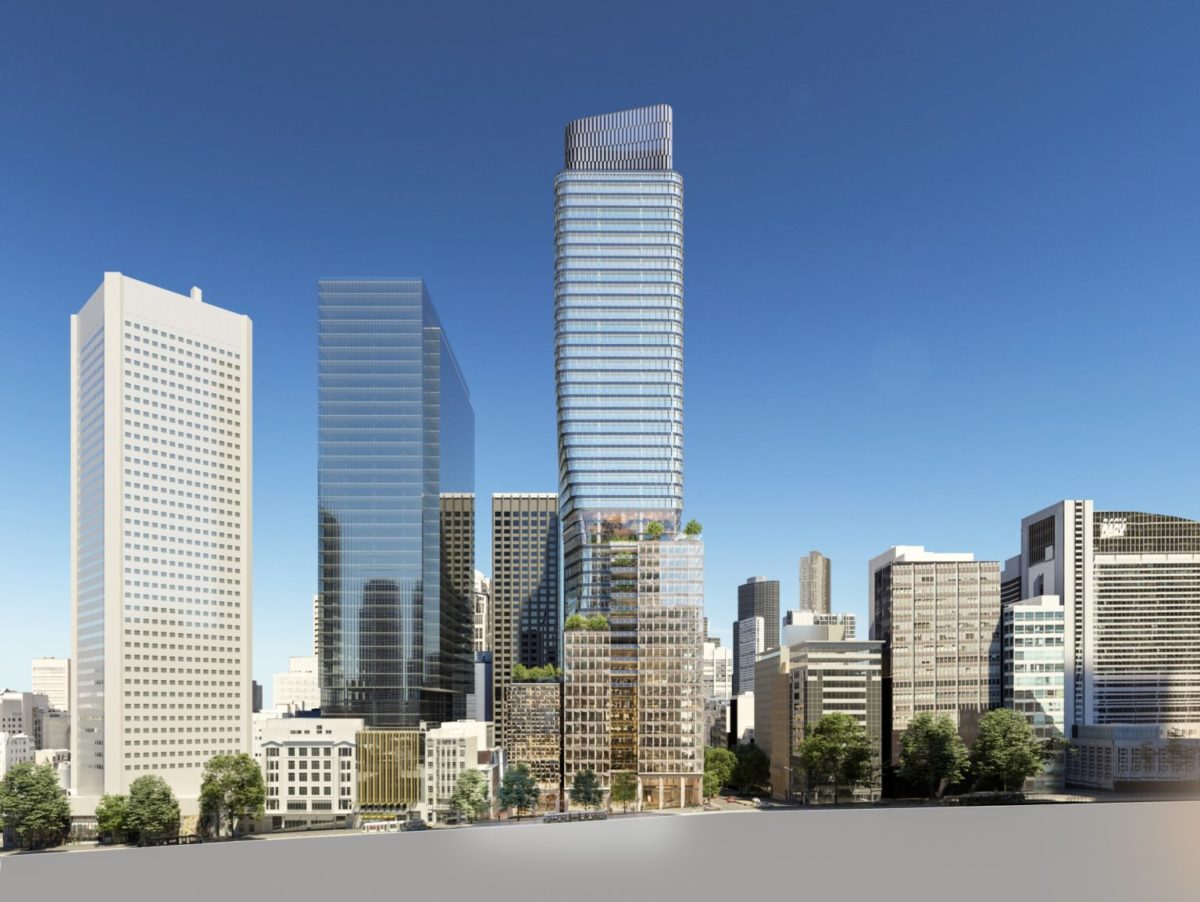Cbus Property, a subsidiary of fund manager Cbus, is trying to establish a new benchmark in sustainable design with a facade featuring energy-producing solar PV panels wrapped around a 49-floor commercial tower it is developing in central Melbourne, Australia.
The property developer has lodged a new Development Application (DA) with the Victorian Department of Environment, Land, Water and Planning (DELWP) for the commercial tower. Designed by architectural firm Bates Smart, the proposed tower will feature approximately 60,000 square meters of commercial office space across 48 levels. It will include 1,300 square meters of retail space, 116 car parks, a sky garden and several open-air terraces. The facade will be clad in “translucent, vertical glass photovoltaic panels,” said the company.
“The solar skin system is made up of translucent, vertical glass photovoltaic panels that will help generate 20% of the base building power,” said Bates Smart Director Cian Davis. “People working in the building will be able to look out the window and see where their energy comes from.”
The unveiling of the plans comes after new research from the ARC Centre of Excellence in Exciton Science found buildings in Melbourne could generate almost three-quarters of their own energy needs if solar technology is fully integrated into roofs, walls and windows.
The research, which examined the viability and impact of window-integrated PV alongside other solar technologies at a city scale, found that comprehensive adoption of existing rooftop PV technology and the widespread deployment of emerging “solar windows” and other building-integrated PV applications could deliver up to 74% of the energy consumption which is required by the city’s buildings.
Davis said the collected energy, coupled with all-electric operations, will help the tower save 430 tons of carbon dioxide emissions per year.
“We didn’t want to design a building that would be outdated by its completion. Instead, it will cater to any work setting and scenario, engage with its surroundings, be open to the neighbourhood at the ground, and achieve the best tall commercial tower performance in Australia,” he said. “When it welcomes its first tenants, it will be Melbourne’s most flexible, sustainable and, frankly, human commercial building. It is architecture designed for the future, which is already here.”
Cbus Property CEO Adrian Pozzo said the “state-of-the-art” development will serve as a “vertical village” for more than 5,500 city workers. Pozzo said the updated DA is an evolution of the previously approved tower, which was originally signed off by the DELWP in January 2020.
“Our vision is to create another world-class commercial building that represents Cbus Property’s leadership in resilient and sustainable development,” he said.
Construction is expected to commence in 2022, pending approvals.
This content is protected by copyright and may not be reused. If you want to cooperate with us and would like to reuse some of our content, please contact: editors@pv-magazine.com.




By submitting this form you agree to pv magazine using your data for the purposes of publishing your comment.
Your personal data will only be disclosed or otherwise transmitted to third parties for the purposes of spam filtering or if this is necessary for technical maintenance of the website. Any other transfer to third parties will not take place unless this is justified on the basis of applicable data protection regulations or if pv magazine is legally obliged to do so.
You may revoke this consent at any time with effect for the future, in which case your personal data will be deleted immediately. Otherwise, your data will be deleted if pv magazine has processed your request or the purpose of data storage is fulfilled.
Further information on data privacy can be found in our Data Protection Policy.